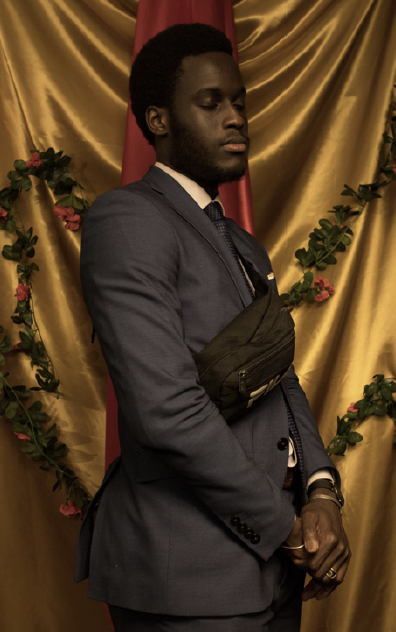Souleymane Bachir Diaw

Senegalese photographer born in 1995,
lives between Dakar (Senegal) and Paris (France)
/
xoulixool.com
Souleymane Bachir began his self-taught photographic practice during his engineering studies. From street photography, he evolves towards the practice of the portrait then towards a photography putting in scene the bodies and the spaces.
His projects, which are carried out solo or in groups, on commission or for his personal research, question the notions of representativeness and revelation a priori attributed to photography.
MP#02 will accompany the development of his series “The Sutura we taking back”. “Sutura” is a Wolof word which refers to a moral principle governing social interactions and recommends discretion or the preservation of the intimacy of others. Playing with what is shown or hidden in the photographic portrait, Souleymane Bachir wishes to question the “sutura” and go beyond this stereotypical approach to the preservation of appearances.
Souleymane Bachir Diaw questions with his series Sutura, the silent voice of men the injunctions conveyed by his native language and his education in Senegal. He tries to say them, to deconstruct them and to subvert them, through the body and the clothes. The photographic studio becomes a laboratory for experiments in hybridization between tradition and modernity, towards new masculinities and spiritualities.
“The masculine has always appeared to me as a contradiction, an impossible in-between between a rigid façade and a blurred heart, expressive perhaps but which seems little accessible. Between “man” and “strong”, there is (very often) a relationship of equivalence, almost tautological.
The Wolof word sutura refers to a virtue of discretion, implying to “keep up appearances”. It applies to everyone. Clothing seems to reveal this ambivalence of masculinity. Where I grew up and elsewhere, it is a privileged means of announcing and representing oneself. However, I have the feeling that men’s clothing does not have the vocation to tell the nuances of his (sensitive) life. I therefore recreate them by staging men and women, objects and clothes.
Their versatility is the fabric of my work. By forgetting to recall the strength and virility, the clothing takes more and more place. It ends up personifying itself, expressing feelings.”
